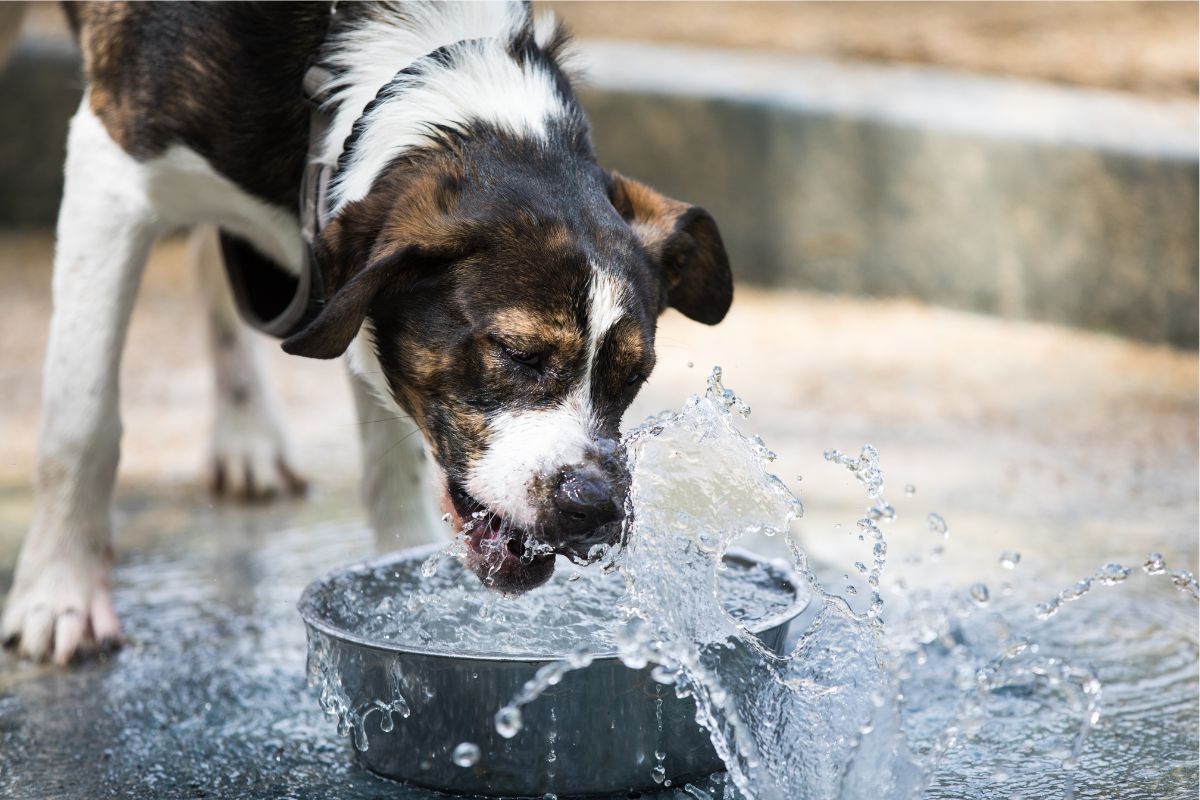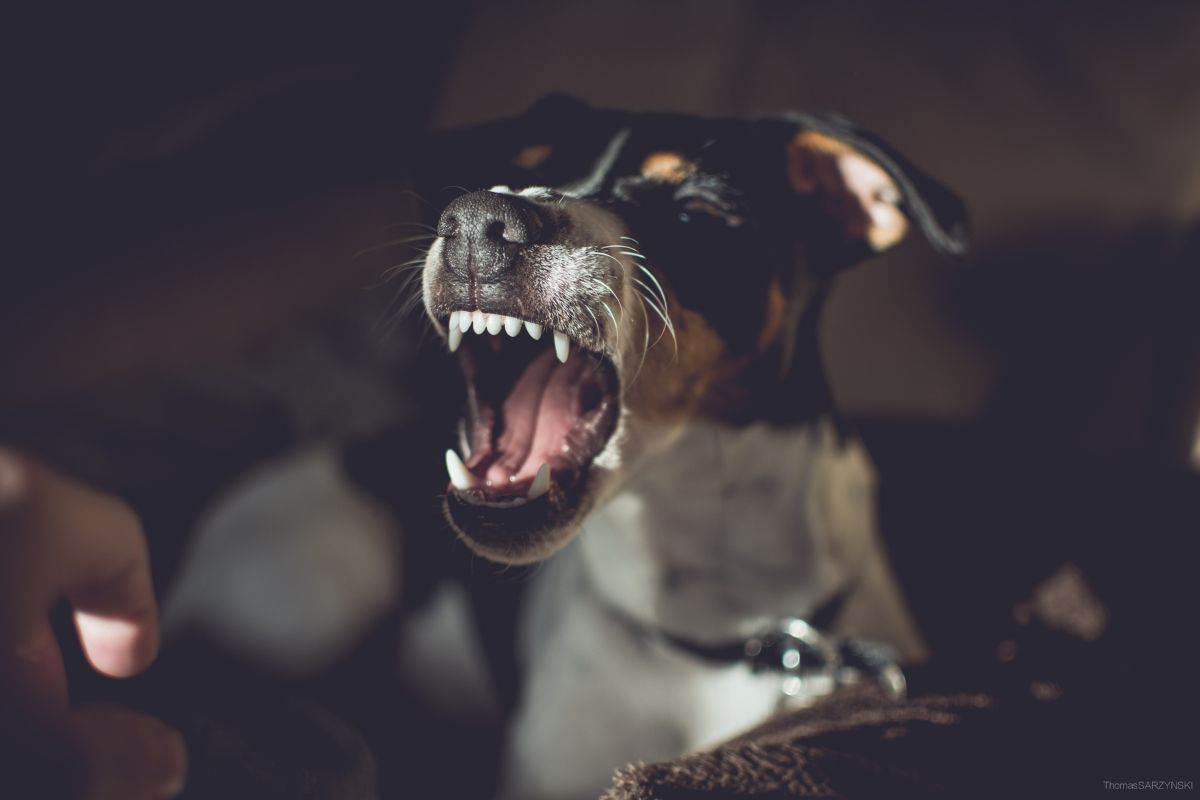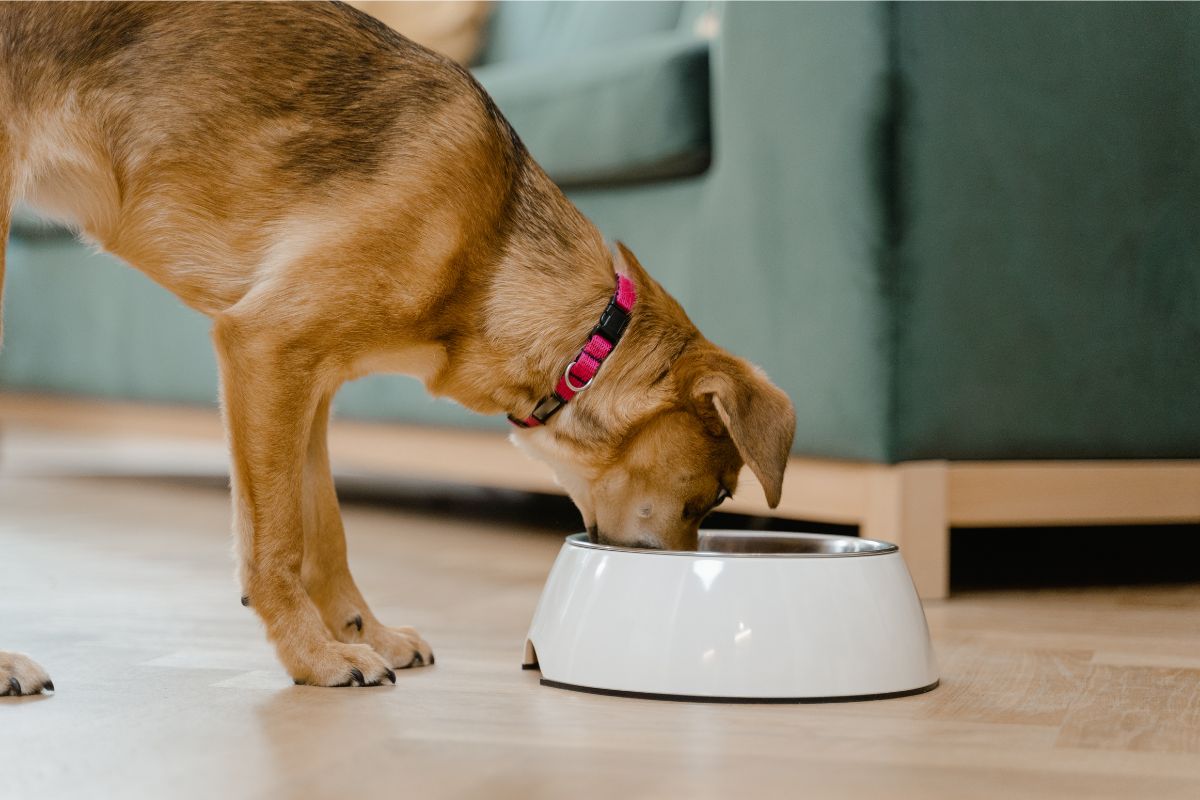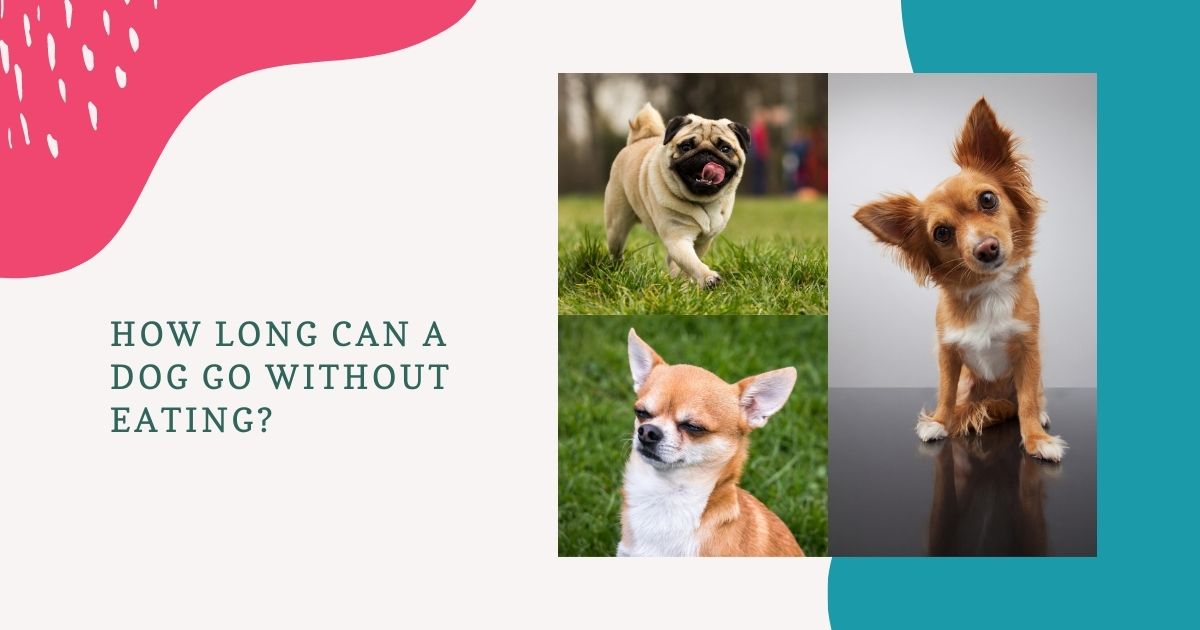My Dog Won’t Drink or Eat
Dogs may lose appetite from time to time, but it becomes a problem when they refuse to eat at all. This may not be comfortable, and you may question how long a dog can go without eating?
Inappetence does not usually persist long, but your dog will lose weight quickly if it does. However, if this problem persists for an extended period, it is a clue that something is badly wrong.
How Long Can a Dog Go Without Eating?
Most healthy dogs can endure up to five days without food, but only if they still drink plenty of water. Some dogs can go up to seven days without eating, but you should never allow this to happen without getting your dog to the clinic.

Reasons Why Your Dog Might Not Be Eating?
This is most likely your most pressing query. The solution is not straightforward; there are various reasons for your dog not eating for a week. Some require only a simple vet visit, while others may necessitate a thorough healing process. Learn about some of these causes in the sections below.
Medical Problems
There are a long number of medical disorders that might cause a dog to lose its appetite. However, some of the most prevalent are as follows:
- Stomach ache
- Infection
- Allergies
- Wound or arthritis-related pain (Arthritis is more common in senior and adult dogs)
- Gingivitis and associated dental problems
- Parasites
- Autoimmune conditions
- Cancer, diabetes, organ failure, and other serious issues. These need treatment as soon as possible.
If you suspect your puppy is suffering from any of these conditions, be aware that its lack of appetite could result from them. Do not rely on home remedies for sick dogs not eating. Seek medical advice.
Mental Illnesses
A few mental problems that might occur in dogs can cause them to lose their appetite. These are anxiety and depression. Surprisingly, the same symptoms appear in persons suffering from these disorders. So let’s check your dog’s signs of sadness and anxiety and how to treat them.
Depression
A depressed dog may display any or all of the following signs:
- Canines suffering from depression are not as playful or active as other dogs.
- Their sleeping patterns may shift. This could indicate that your dog sleeps all day and night, only sleeps during the day, or does not get enough sleep. Over time, this might lead to irritation.
- Disinterest in activities they once enjoyed. Is it no longer interested in the delicacies it once craved? Is its new chew toy still unopened? If this is so, it may be suffering from depression.
It is important to note that similar symptoms are also the same in other medical problems. The best action is to go to the vet and first rule out any other possibilities. They’ll probably ask you questions about how your home life has altered, how often you see your dog, and so on.
If your dog’s diagnosis is depression, the veterinarian will prescribe drugs or a new treatment plan to help it recover. Discussing your dog’s nutrition and feeding habits with your veterinarian is always a good place to start.
Anxiety
Anxious dogs are more prone to misbehaving, as evidenced by their actions. These are some examples:
- Aggression.
- Trembling.
- Barking.
- Growling.
- Hiding.
- Tucking its tail between its legs.
- Constantly attempting to flee.
- Inability to go outside without becoming anxious.
- Fear of touches.
These are all common indicators of anxiety in your dog and a decrease in appetite. When this happens, you will consult with your veterinarian to determine the best course of action. They can either offer you medication or give you further ideas on how to keep your dog quiet in the future. These could include:
- Investing more time in your dog. The most prevalent cause of anxiety in dogs is staying away from their owner(s) for a long time. This is especially common if you work or travel regularly.
- Giving them some space away from other people and loud noises. You should set aside a room in your house for your dog to retreat to when it is fearful of its surroundings. Dim the lights, give it a large kennel to sleep in, and keep it quiet.
- More socialization is crucial. To avoid terrifying your dog with new experiences, ensure that you expose it to the outside world. If you don’t start socializing with your dog early on, it will be more challenging to interact well with other people and animals later.
It is Picky
Cats have a reputation for being fussy eaters, but dogs can also be picky. When this is the case, all you can do is experiment with different foods until it finds one it enjoys and then stick with it. This demands a lot of patience because you may spend a lot of money trying to find a diet that it can follow. However, if you work hard enough, you will succeed.

What Should I Do (and Not Do) When My Dog Isn’t Eating?
Are you asking yourself what to do if your dog won’t eat? Whatever is causing your dog to turn its nose up at its food, you must take it to the vet to solve the problem and get it hungry again. Only a professional can properly assess the situation and restore your dog’s health.
Finally, listen to your doctor’s advice and act on it. If your dog requires medication to rekindle its hunger, give it. Give it some TLC if it simply needs more time with you to feel better. Remember, your dog requires you just as much as it needs food.
Your dog’s refusal to eat might be due to various circumstances, which vary from dog to dog. You must carefully examine your dog to establish the reason and possible remedies. With that in mind, here’s what you should do if your pet goes on a fast for an extended time.
Take Things Slowly
You should not panic if your dog refuses to eat one of its meals. Your pet, like humans, may experience a temporary loss of appetite without experiencing long-term consequences. You should not worry as long as the dog shows no abnormality.
Either way, how long can a puppy go without eating? One or two days without meals could be problematic. However, if the fast lasts more than two days, you should take action immediately.
Learn Why Your Dog isn’t Eating
To determine what is preventing your dog from eating, examine any changes in their activity, dog food, and body for symptoms of the disease. It will be easier to find a solution if you can identify the problem.
Purchase Its Preferred Dog Food
Some reasons, such as pickiness, are easy to address. For example, you could try to buy your dog’s favorite food and, if they start eating, make sure you have enough for them. Iams strives to produce the highest quality dog food in the world, and you can be confident that your dog will enjoy Iams’s exclusive food.
Take Your Dog to the Veterinarian
If none of the other options work, your dog should see a veterinarian. This way, you’ll know why the dog’s not eating or drinking.
How to Get a Dog to Eat
You may have to find ways how to get a dog to eat or drink by making their food or water more enticing in some instances. This is especially useful if your dog’s lack of appetite is due to stress, but it is less likely to help if your dog has an underlying medical condition.
Consider putting a little chicken or beef broth in your dog’s drink. Flavored water can make your dog want to drink more.
Try adding extra flavor to your dog’s food to make it taste better. Instead of rich, high-fat foods, consider adding a little portion of boneless, skinless chicken breast to your dog’s regular diet. You might also use bland canned dog food or baby food to add flavor. The idea is to make your dog’s food taste better so that they will eat it.
When Should I Worry About My Dog Not Eating?
How long can a dog go without eating? You should worry if your dog goes more than 24 hours without drinking or 48 hours without eating. If your dog exhibits any symptoms of illness, such as vomiting, diarrhea, lethargy, or weakness, you should call your veterinarian.
Your veterinarian will question your dog’s medical history to uncover potential causes of your dog’s lack of appetite. Following that, your veterinarian will conduct a complete physical assessment on your dog to look for medical issues that may be influencing its appetite.
If there are no evident causes of the lack of appetite during the examination, your veterinarian will most likely propose laboratory tests. These tests may include blood tests, urine, x-rays to rule out potential sources of pain, or other diagnostic testing.
If your veterinarian can discover why your dog will not eat, they will propose treatment to address the underlying problem. If your dog isn’t eating because of nausea, your veterinarian may give it an anti-nausea injection or send it home with oral medication.
If your dog refuses to eat due to tooth pain, your veterinarian may advise a dental cleaning or dental extractions.
If there is no proper explanation for your dog’s anorexia, your veterinarian may prescribe an appetite stimulator or what to feed a sick dog with no appetite. In addition, your veterinarian may assist you in establishing a feeding plan that includes palatable (tasty) food rich in calories and nutrition.

Final Thoughts
You may discover that your dog won’t eat or drink at some point. And this can be due to various factors. However, the first step is to take your pet to a veterinarian for a checkup and diagnosis.
It is preferable to find out what is wrong with your dog early on rather than waiting until it is too late and your dog is starving. You should ideally only wait 48 hours. If the behavior persists, ensure your dog gets adequate fluids, such as water, and then visit your nearest vet facility for expert advice.


1 thought on “How Long Can a Dog Go Without Eating?”
Comments are closed.